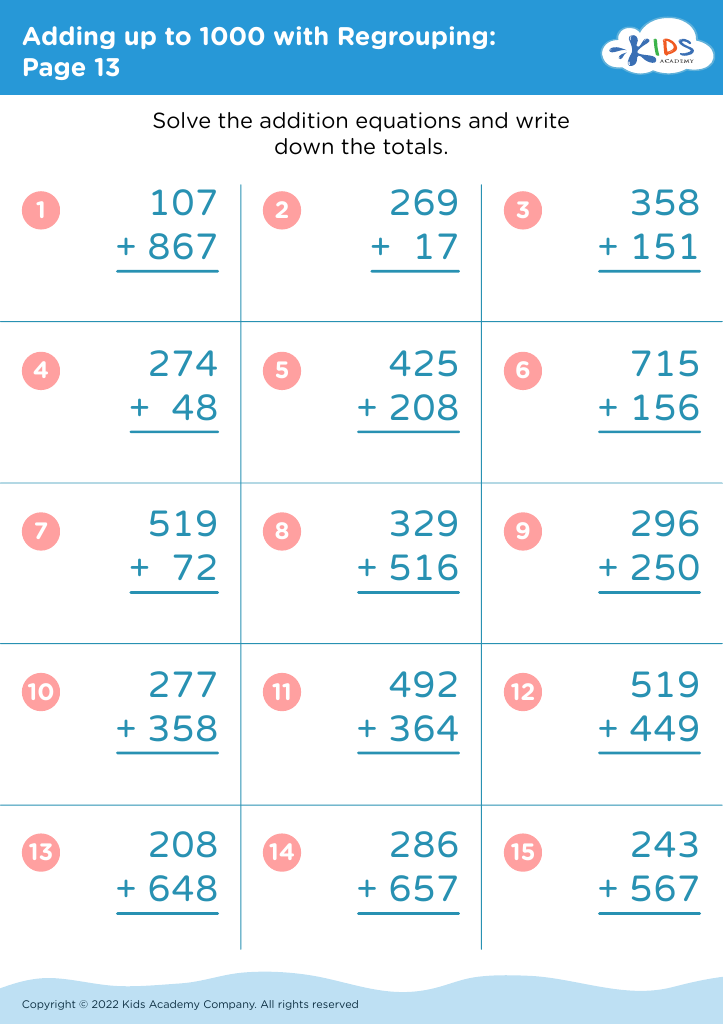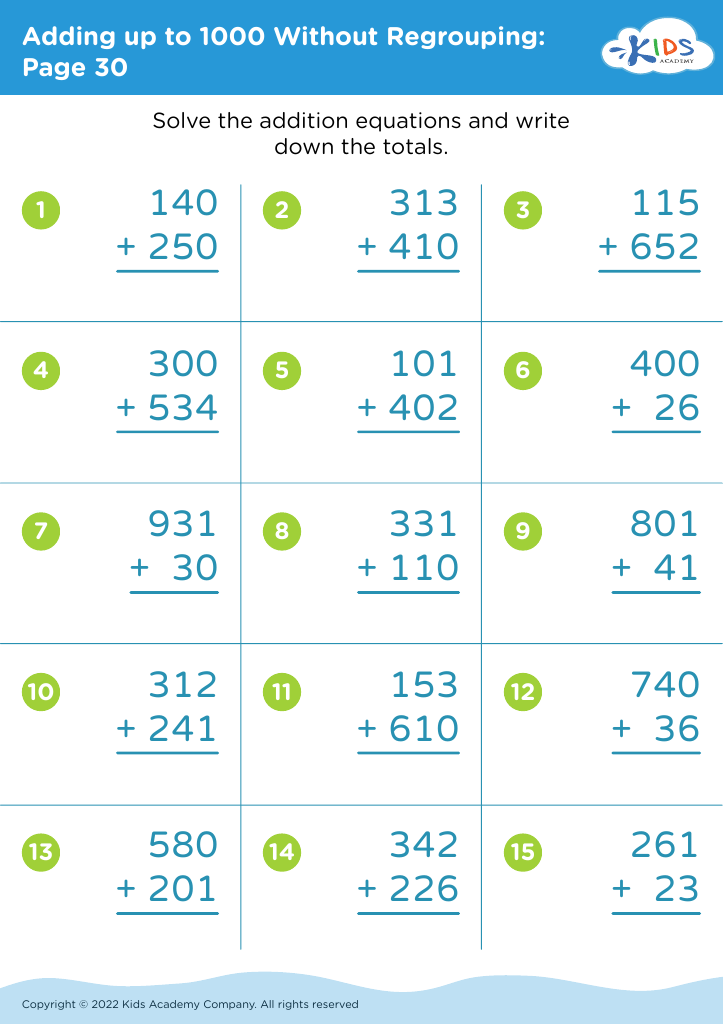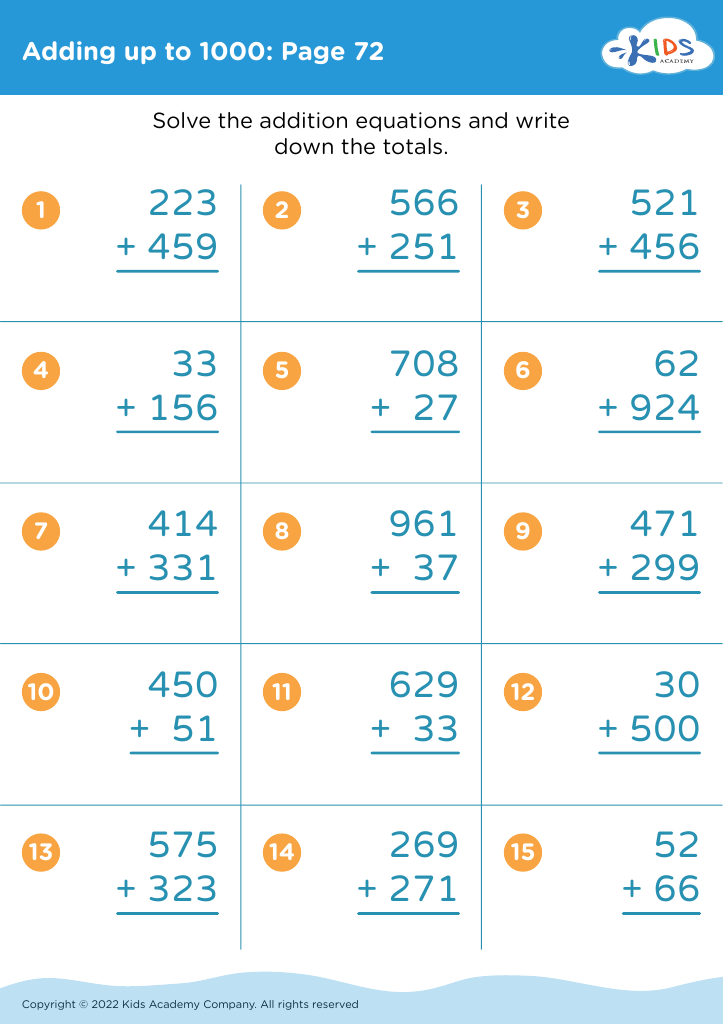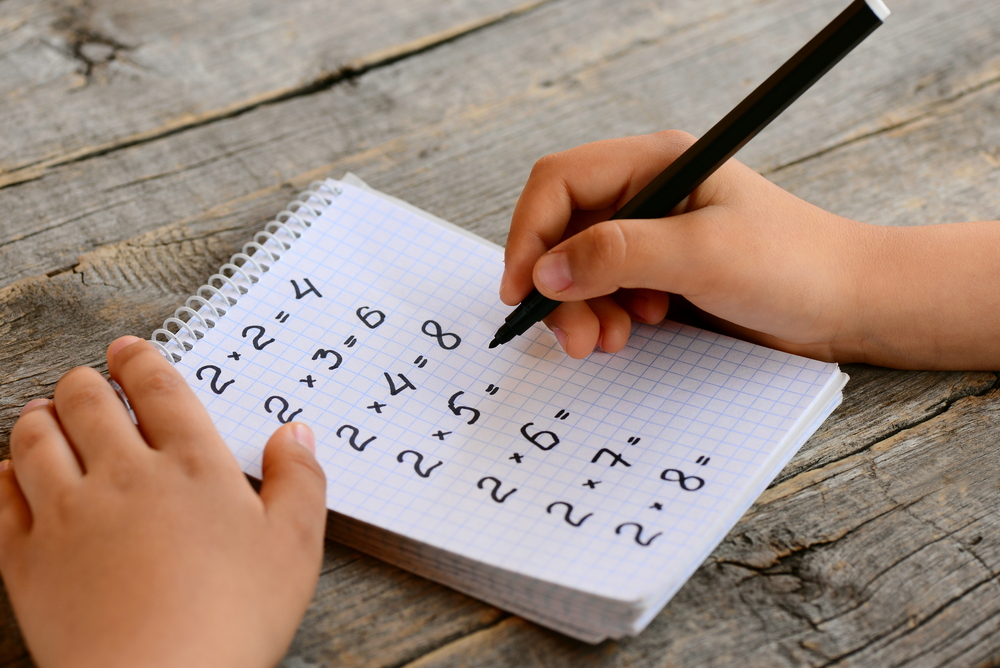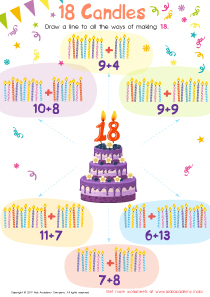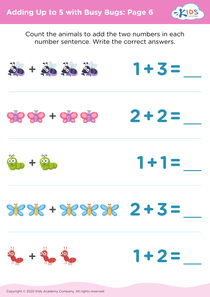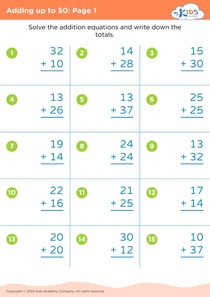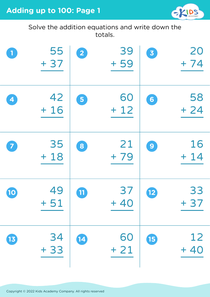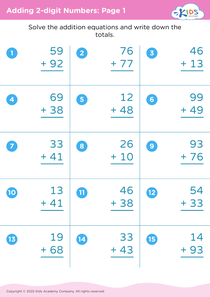Identifying shapes Adding up to 1000 Worksheets for Ages 6-7
3 filtered results
-
From - To
Explore our engaging "Identifying Shapes Adding up to 1000 Worksheets" designed specifically for ages 6-7! These worksheets provide a fun and interactive way for young learners to recognize basic shapes while practicing addition skills up to 1000. With vibrant illustrations and age-appropriate activities, children will enhance their shape identification abilities as they solve various math problems. Our resources cater to different learning styles, ensuring each child can thrive. Encourage exploration and creativity as your child develops essential mathematical and visual skills. Download the worksheets today and watch them discover the joy of learning through shapes and numbers!
Identifying shapes and understanding numbers that add up to 1000 are fundamental skills for children aged 6-7, laying the groundwork for critical thinking and problem-solving abilities. Recognizing shapes helps kids develop spatial awareness, an essential skill that fosters creativity and geographical understanding. Familiarity with shapes also supports learning in subjects like art and science, enhancing their ability to analyze and interpret their surroundings.
Meanwhile, grasping the concept of addition, specifically adding up to 1000, encourages mathematical fluency. At this age, students transition from simple rote counting to more complex calculations, nurturing their abilities for future math success. Understanding large numbers helps build their confidence in tackling real-world problems, such as managing money or estimating distances.
Furthermore, engaging in these activities boosts cognitive development. When parents and teachers emphasize both shape recognition and numerical addition, they create a comprehensive learning environment that caters to various learning styles. This integration fosters a love for learning by revealing the interconnectedness of mathematics and visual analysis, stimulating both analytical and creative thinking.
Ultimately, prioritizing these foundational skills equips children for success in academics and daily life, ensuring they are well-prepared for the complexities of the world around them.
